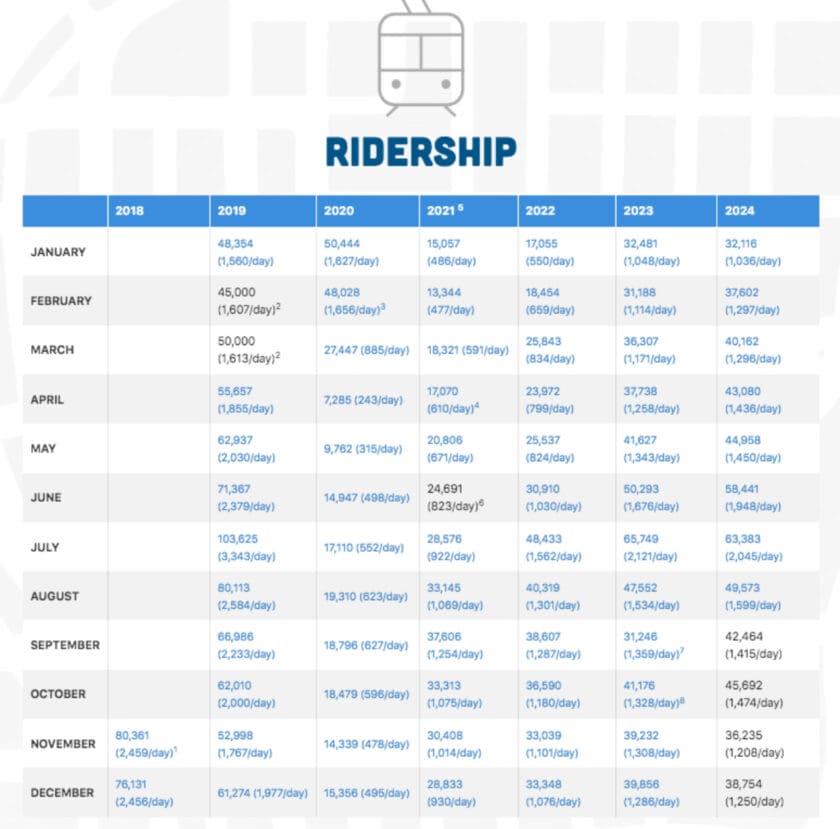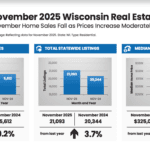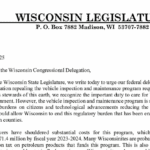MILWAUKEE — Ridership on Milwaukee’s streetcar, The Hop, remains lackluster despite the addition of a second line in April 2024, with annual figures lagging nearly 30% below the system’s early highs, according to the latest data posted on its website. The free-to-ride streetcar, a project long plagued by financial and operational challenges, recorded 494,445 passengers in 2023—a notable jump from the 261,303 low in 2020 but still well short of the 678,498 seen in 2019, its strongest year, driven by curiosity seekers rather than regular commuters.
The Hop launched its original M-Line in November 2018, drawing crowds eager to try the new system. That first month, excluding the grand opening weekend’s 16,413 riders, saw 15,838 passengers—a figure that pales beside July 2019’s peak of 71,524, when novelty still fueled ridership. The subsequent L-Line expansion, connecting downtown to the lakefront and the Couture high-rise, aimed to broaden appeal, but 2023’s total of 494,445 suggests the system has yet to establish a consistent user base. Even standout moments, like July 2023’s Harley-Davidson Homecoming Festival, which averaged 4,557 daily riders over four days and hit 6,886 on July 15, fail to mask the broader trend of decline from those early highs.
Transparency issues further cloud The Hop’s story. As reported March 19, the City had stopped updating ridership figures last August. While they have since provided data for the final four months of 2024, the city has released no figures for 2025 despite reaching April. The inconsistent reporting ridership numbers leaves taxpayers guessing about the system’s performance in its seventh year.
Historical data underscores the challenge. After November 2018’s debut, ridership soared in 2019, with months like June (64,123) and August (63,841) reflecting initial interest. But subsequent years saw a drop-off: 331,589 in 2020, 375,824 in 2022, and 2023’s partial rebound to 494,445. These numbers, while an improvement over the leanest times, remain far below the curiosity-driven peaks of 2019, suggesting The Hop struggles to convert early excitement into a reliable commuter ridership.
The project’s financial burdens add to its woes. Construction costs for the M-Line, pegged at $123.9 million in 2015, escalated over time, and the L-Line extension has further strained public funds. Operated by Transdev and owned by the city, The Hop covers just 2.5 miles, linking downtown, the Historic Third Ward, and the Lower East Side—a limited scope that critics argue fails to justify its expense.
The Department of Public Works, which manages the streetcar, has offered no explanation for the missing 2025 data or updates on its future. The ridership page on thehopmke.com, stuck at 2023 figures, provides no clues about current usage. For now, Milwaukee’s streetcar remains a bust, its early promise overshadowed by persistent struggles to draw riders beyond the initial wave of curiosity seekers.

















